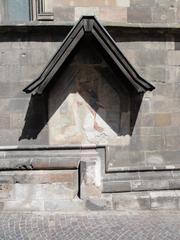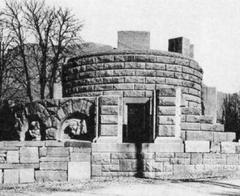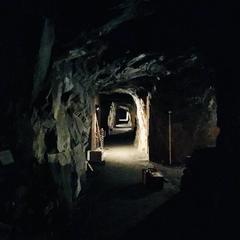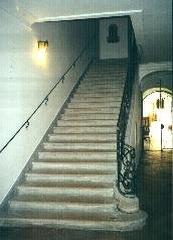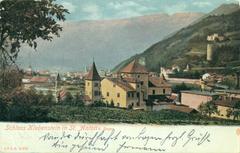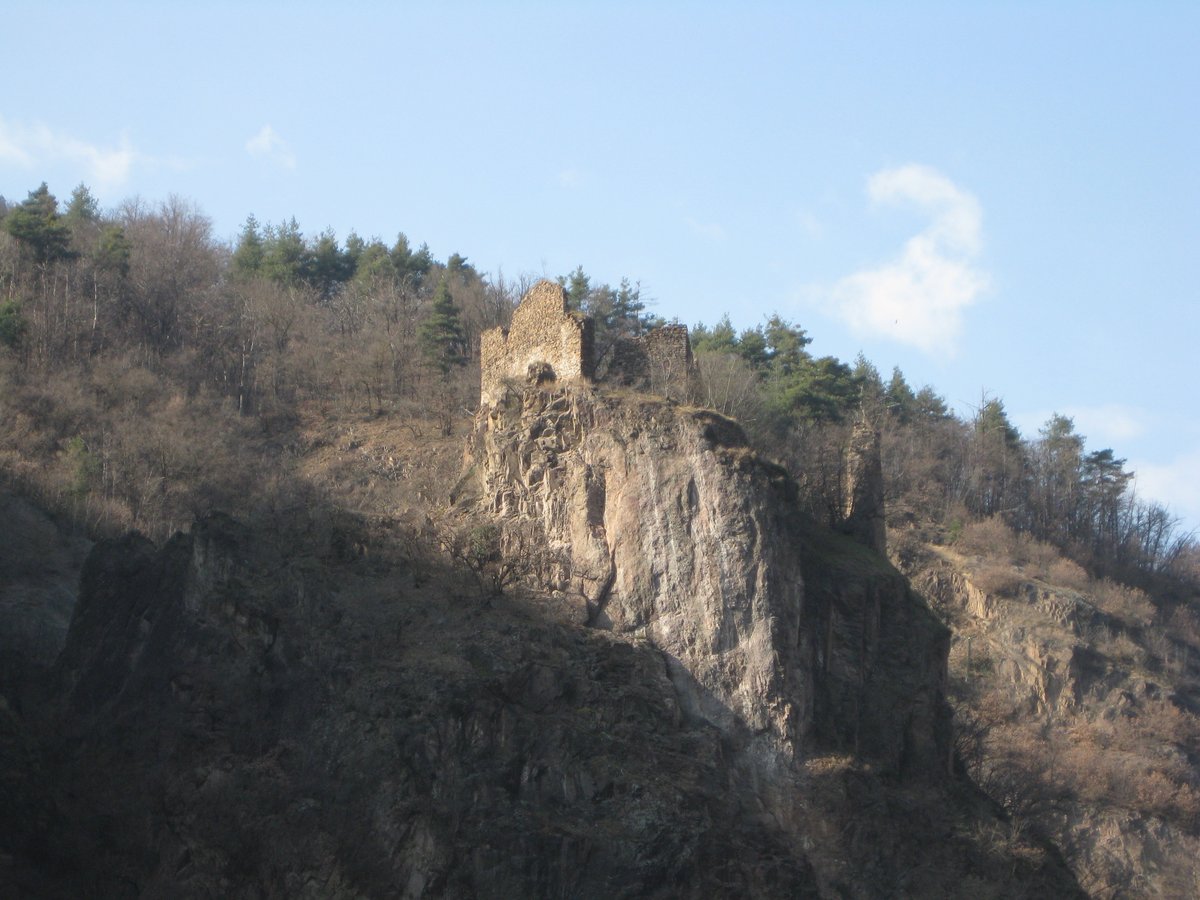
Walbenstein Castle Visiting Hours, Tickets, and Bolzano Historical Sites Guide
Date: 04/07/2025
Introduction
Nestled in the scenic Alpine region of Bolzano, South Tyrol, Walbenstein Castle stands as a captivating testament to the area’s rich medieval heritage and cultural tapestry. While it might not enjoy the same international fame as some of its neighboring fortresses, Walbenstein Castle offers a profound glimpse into the evolution of castle architecture, regional politics, and noble life from the Middle Ages through the Renaissance and into modern times. Strategically perched to oversee vital trade routes, the castle embodies the complex history of South Tyrol—a region shaped by Italian, Germanic, and Ladin influences. Today, Walbenstein Castle is not only a symbol of feudal power and artistic legacy but also serves as a vibrant hub for tourism, education, and cultural events that celebrate the living history of Bolzano (SpottingHistory; Italien Expert; Salt & Wind Travel).
This guide provides comprehensive information on Walbenstein Castle visiting hours, ticketing options, guided tours, and accessibility, ensuring an enriching and seamless visitor experience. The castle’s integration with picturesque vineyards and Alpine vistas further enhances its appeal, making it a must-visit destination for history enthusiasts, architecture lovers, and travelers seeking authentic South Tyrolean charm. Additionally, this article contextualizes Walbenstein Castle within Bolzano’s wider network of historical sites and cultural festivals, offering practical tips to maximize your visit (suedtirol.info; The Tourist Checklist).
Table of Contents
- Historical Background
- Architectural Features
- Cultural and Regional Significance
- Visitor Experience and Practical Information
- Nearby Attractions
- Events at Walbenstein Castle
- FAQ
- Conclusion
Historical Background
Origins and Early History
Walbenstein Castle, though not as internationally renowned as some other Bolzano fortresses, is emblematic of the region’s medieval past. Its origins trace back to the Middle Ages, a period when Bolzano (Bozen in German) functioned as a key trading post between Northern and Southern Europe. The proliferation of castles in this region was driven by the need for defense, control of trade routes, and the assertion of noble power (SpottingHistory).
While specific documentation on Walbenstein Castle’s earliest construction is limited, it aligns with the architectural and historical trends of the area. Most castles in Bolzano were established between the 12th and 14th centuries, often by local nobility or ecclesiastical authorities. The castle’s strategic location allowed its occupants to oversee valleys and regulate access to Bolzano, a city that flourished due to its position at the crossroads of Alpine trade routes (Salt & Wind Travel).
Medieval Significance
In the Middle Ages, castles like Walbenstein served dual purposes: military fortresses and administrative centers. They typically housed local lords or noble families who exercised judicial and economic authority over the surrounding lands. The castle’s defensive features—thick stone walls, towers, and elevated positions—reflect the era’s turbulent nature, marked by frequent conflicts and shifting allegiances.
These fortresses were also powerful symbols of feudal prestige. As regional power structures evolved, many castles gradually transitioned from military outposts to more comfortable residences, reflecting the stabilization of the political landscape (Italien Expert).
Renaissance and Modern Era
By the Renaissance, the need for heavily fortified structures diminished due to new military technologies and increased regional stability. Many castles, including Walbenstein, were renovated or expanded to reflect evolving tastes—incorporating larger windows, refined living quarters, and decorative elements.
In modern times, the fate of South Tyrol’s castles varied: some fell into ruin, while others were restored as museums or cultural venues. The preservation of Walbenstein Castle is part of a larger effort to celebrate and maintain the region’s architectural heritage (Italien Expert).
Architectural Features
Layout and Structure
Walbenstein Castle’s architecture is characteristic of South Tyrolean medieval fortifications. The central keep or main tower is surrounded by defensive walls and additional towers at strategic points. Its elevated position provides commanding views of the landscape, enhancing both defense and surveillance.
The main entrance is typically fortified with a gatehouse, leading into an inner courtyard that served as the hub of daily activity. Surrounding the courtyard are residential quarters, storerooms, and service buildings. The use of local stone in construction not only provided durability but also allowed the castle to blend seamlessly into its Alpine surroundings (Italien Expert).
Defensive Elements
Key defensive features include:
- Thick Perimeter Walls: Built to withstand sieges, often several meters thick.
- Towers: Located at corners or along walls for archers and lookouts.
- Arrow Slits and Battlements: Allow defenders to fire while staying protected.
- Moats or Ditches: Natural or artificial ditches sometimes enhanced perimeter security.
Residential and Artistic Elements
As Walbenstein evolved from military stronghold to noble residence, its architecture became more refined:
- Great Hall: Central gathering place, often adorned with frescoes or tapestries.
- Private Chambers: Residential suites for the noble family, featuring fireplaces and decorative woodwork.
- Chapel: Reflecting the importance of religion in daily life.
- Gardens and Courtyards: Evolved from utilitarian spaces to decorative gardens for leisure.
Artistic embellishments, particularly frescoes and stone carvings, are notable features. Although Runkelstein Castle is most famous for its secular frescoes, Walbenstein likely features its own decorative elements, such as painted walls and intricately carved woodwork (Italien Expert).
Restoration and Preservation
Walbenstein Castle has undergone restoration to preserve its architectural integrity. Efforts focus on stabilizing structures, repairing masonry, and conserving original decorative elements. Adaptive reuse for cultural events and exhibitions helps ensure ongoing preservation and public engagement (Italien Expert).
Cultural and Regional Significance
Symbol of South Tyrolean Heritage
Walbenstein Castle is a tangible link to South Tyrol’s layered history, embodying the confluence of Italian and Germanic influences. The region is multilingual, with Italian, German, and Ladin spoken, and this diversity is reflected in the castle’s history and cultural programming (Salt & Wind Travel).
Role in Tourism and Education
Castles like Walbenstein are vital to Bolzano’s tourism industry, attracting visitors interested in history, architecture, and the Dolomites’ scenic beauty. Guided tours, educational programs, and cultural events provide opportunities for both locals and tourists to engage with the region’s heritage (The Tourist Checklist).
Landscape Integration
The castle’s setting amidst vineyards and Alpine vistas is a hallmark of South Tyrolean architecture, offering not only a journey into the past but also breathtaking views of the countryside (Italien Expert).
Visitor Experience and Practical Information
Visiting Hours and Tickets
Walbenstein Castle is generally open from April through October:
- Tuesday to Sunday: 9:00 AM – 6:00 PM (Last admission at 5:30 PM)
- Closed Mondays
Admission fees:
- Adults: €10
- Reduced (students, seniors): €7
- Children under 12: Free
- Family and group rates may be available
Tickets can be purchased online via the official South Tyrol castles portal or at the castle’s ticket office. Always check the official website for the latest information on hours and ticket options.
Accessibility and Tours
The castle is accessible by well-marked trails from Bolzano’s city center. Guided tours are available in multiple languages and highly recommended for a deeper understanding of the castle’s history and architecture. Some areas may be challenging for visitors with mobility issues, but staff can advise on accessible routes.
Facilities and Amenities
- Visitor Center: Offers historical context, maps, and information.
- Café: Serves local cuisine and refreshments.
- Event Spaces: Available for private events and cultural performances.
Visitor Tips
- Advance Booking: Recommended during peak seasons.
- Photography: Allowed in most outdoor areas; indoor restrictions may apply.
- Special Events: Check the calendar for exhibitions, festivals, or concerts.
Nearby Attractions
Enhance your visit by exploring other historical sites:
- Runkelstein Castle: Renowned for its frescoes (3 km from Walbenstein)
- Maretsch Castle: Renaissance castle in Bolzano’s city center
- Sigmundskron Castle: Home to the Messner Mountain Museum
Special Events at Walbenstein Castle
The castle hosts cultural events, medieval reenactments, and seasonal festivals. For up-to-date event schedules, consult the official calendar.
Frequently Asked Questions (FAQ)
Q: What are Walbenstein Castle’s visiting hours?
A: Typically Tuesday to Sunday, 9:00 AM to 6:00 PM, from April to October.
Q: How can I purchase tickets?
A: Online via the official South Tyrol castles website or at the castle’s ticket office.
Q: Are guided tours available?
A: Yes, in multiple languages.
Q: Is Walbenstein Castle accessible for visitors with mobility issues?
A: Partial accessibility is available; some areas may be challenging.
Q: What should I bring?
A: Comfortable walking shoes, appropriate clothing, and a camera.
Conclusion
Walbenstein Castle is a captivating historical and cultural landmark, offering rich insights into South Tyrol’s medieval heritage and architectural evolution. Visitors can enjoy immersive tours, panoramic views, and vibrant cultural events in a setting that bridges past and present. Plan your visit by checking current hours, booking tickets in advance, and exploring nearby attractions for a comprehensive Bolzano experience.
For more travel tips, related historical site guides, and updates on cultural events, download the Audiala app and follow us on social media. Experience the living history of Bolzano and South Tyrol!
Visuals and Media Suggestions
- High-quality images of Walbenstein Castle’s exterior and interior, with alt text such as “Walbenstein Castle main tower in Bolzano” and “Interior frescoes at Walbenstein Castle”
- Interactive map showing the location relative to Bolzano city center
- Virtual tour video or link if available
References and Further Reading
- SpottingHistory
- Italien Expert
- Salt & Wind Travel
- suedtirol.info
- bolzano-bozen.it
- The Tourist Checklist





